What Would You See As You Fell Into A Black Hole?

Would there be only blackness past the event horizon? Or something more?
Black holes are some of the most perplexing objects in the entire Universe. Objects so dense, where gravitation is so strong, that nothing, not even light, can ever escape from it. Many physical black holes have been identified, from stellar-mass scale ones in our own galaxy to supermassive ones at the centers of the majority of galaxies, many millions or even billions of times the mass of our Sun. The key property surrounding the event horizon, that light can never escape from within it, sets up a boundary in space: once you cross it, you’re doomed to hit the central singularity. But what would you see as you fell in? Would the lights stay on, or would the Universe go dark? At last, physics has deciphered the answer, and it’s gorgeous.

At the center of our own galaxy, we’ve been able to observe the motions of stars around a central point mass with a mass around 4 million solar masses that emits no light at all. This object in particular — Sagittarius A* — is a surefire candidate for a black hole, something we can tell directly by measuring the stars which orbit it for two full decades now.
But there are a number of very counterintuitive things that happen as you get near a black hole’s event horizon, and things get even worse once you cross it. There’s a very, very good reason why once you hurtle over that invisible barrier, you can never get out! This remains true no matter what class of black hole you fell into, not even if you had a spaceship capable of accelerating in any direction at an arbitrarily large rate. It turns out that General Relativity is a very harsh mistress, particularly when it comes to black holes. The reason has everything to do with Einstein’s greatest achievement, celebrating it’s 100th anniversary this year: all because of how a black hole, unique among masses, bends spacetime.
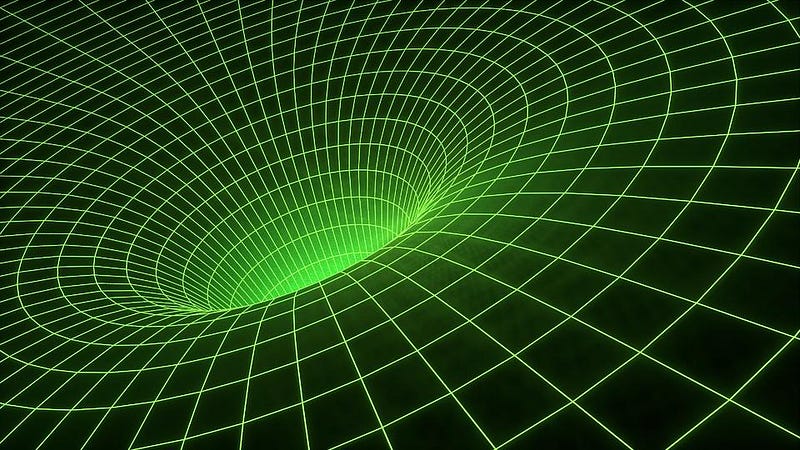
When you’re very far away from a black hole, the fabric of space is less curved. In fact, when you’re very far away from a black hole, its gravity is indistinguishable from any other mass, whether it’s a neutron star, a regular star, or just a diffuse cloud of gas. Spacetime may be curved, but all you can tell at your distant location is that it’s due to the presence of a mass, not what the properties or distributions of that mass are. But if you looked with your eyes, instead of a gas cloud, star or neutron star, there would be a completely black sphere in the center, from which no light will be visible. (Hence the “black” in the moniker “black holes.”)
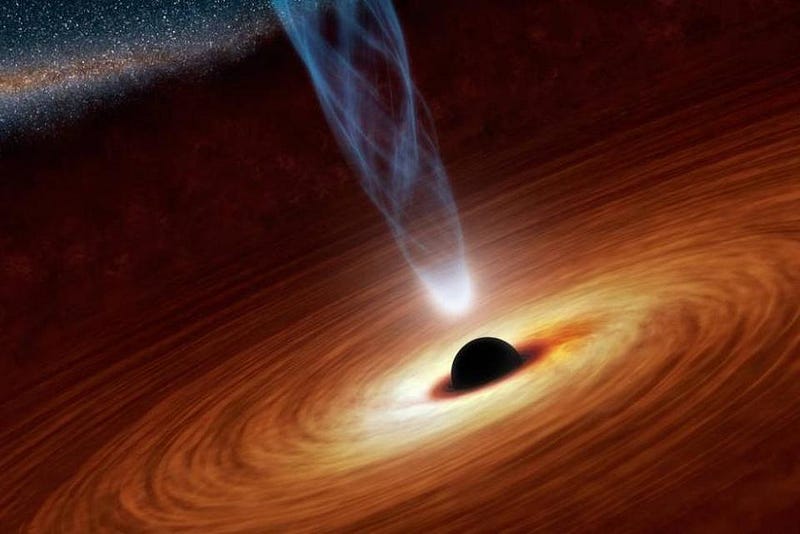
This spherical region, known as the event horizon, is not a physical entity, but rather a region of space — of a certain size — from which no light can escape. From very far away, it appears to be the size that it actually is, as you’d expect. In other words, as you approached a black hole, it would literally look like a hole of total blackness silhouetted against the backdrop of space, with the light from the surrounding environment being heavily distorted.

For a black hole the mass of the Earth, this sphere would be tiny: about 1 cm in radius, while for a black hole the mass of the Sun, the sphere would be closer to 3 km in radius. If you scaled the mass (and hence, the size) all the way up to a supermassive black hole — like the one at our galaxy’s center — that would be more like the size of a planetary orbit or a red giant star like Betelgeuse!
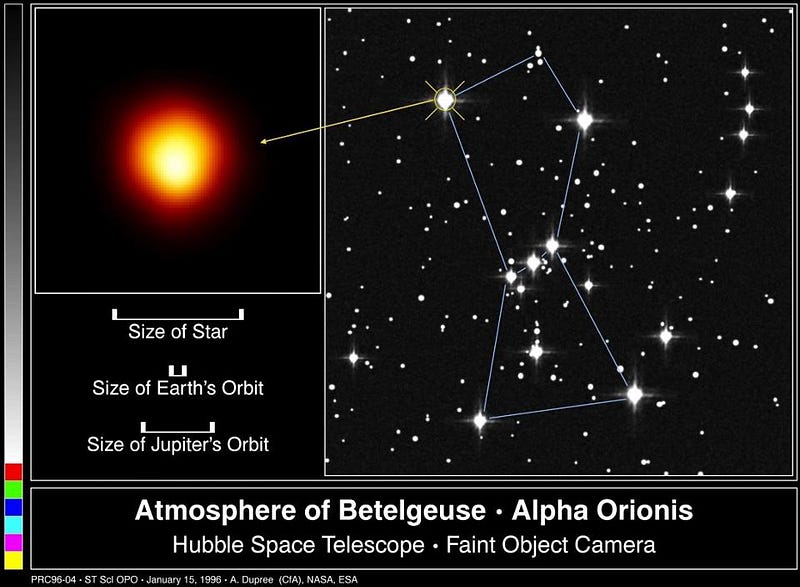
So now you’re ready to see the ultimate visualization: what happens as you approach and eventually enter a black hole?
From a great distance away, the apparent geometry of what you see works just like you’d expect, matching your calculations. But as you travel, in your perfectly equipped, indestructible spacecraft, you start noticing something strange as you approach this black hole. If you halved the distance between you and a star, the star’s angular size would appear twice as large. If you cut the distance down to a quarter, it’d appear four times as large. But black holes are different.
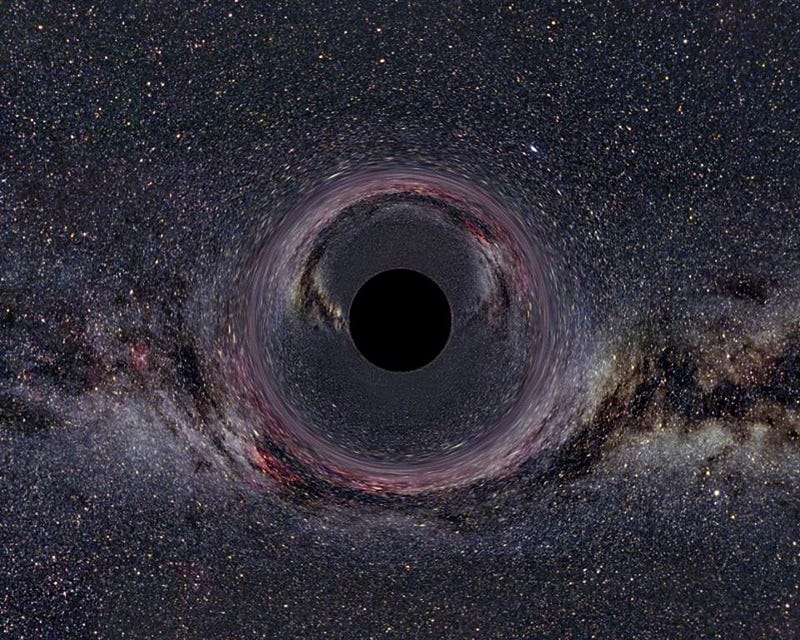
Unlike all the other objects you’re used to, where they appear to get visually larger in proportion to the distance you are away from them, this black hole appears to grow much more quickly than you were expecting, thanks to the incredible curvature of space.
From our perspective on Earth, the black hole in the galactic center will appear tiny, with its radius measured in micro-arc-seconds. Still, compared to the naive radius you compute in relativity, it will actually appear 150% larger, due to the way space is curved. If you approached it, by time the event horizon should be the size of the full Moon on the sky, it’s actually more than four times as large as that! The reason, of course, is that spacetime curves more and more severely as you get close to the black hole, and so the “lines-of-light” that you can see from the stars in the Universe that surround you are bent disastrously out of shape.
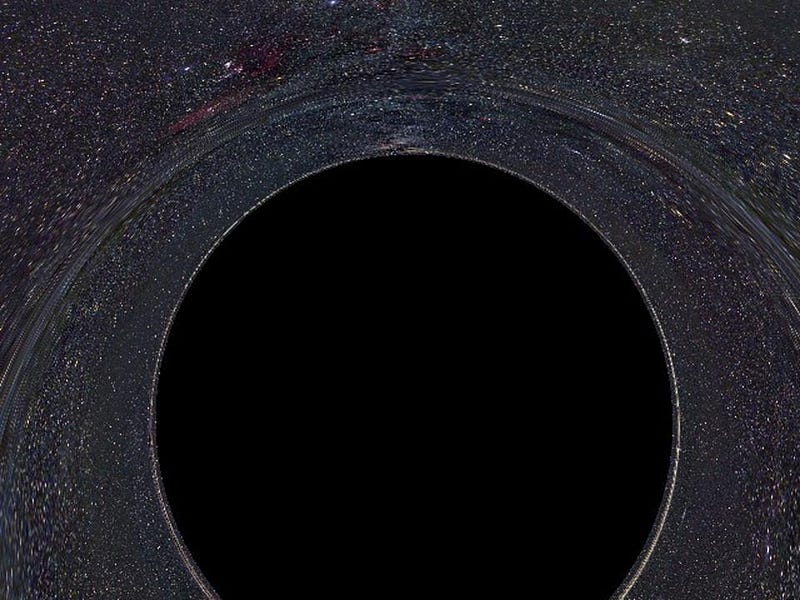
Conversely, the apparent area of the black hole appears to grow and grow dramatically; by time you’re just a few (maybe 10) Schwarzschild radii away from it, the black hole has grown to such an apparent size that it blocks off nearly the entire front view of your spaceship. That’s a huge disparity from just a geometrical object like that in uncurved space, which would appear to be about the size of your fist held at arms length.
As you start to come closer and closer to ISCO — or the innermost stable circular orbit — which is 150% the radius of the event horizon, you notice that the front-view from your spaceship becomes entirely black. Once you cross that point, even the rear direction, which faces away from the black hole, begins to be subsumed by darkness. Again, this is because of how the light-paths from various points travel in this highly bent spacetime. For those of you (physics buffs) who want a qualitative analogy, it begins to look very much like the lines of electric field when you bring a point charge close to a conducting sphere.
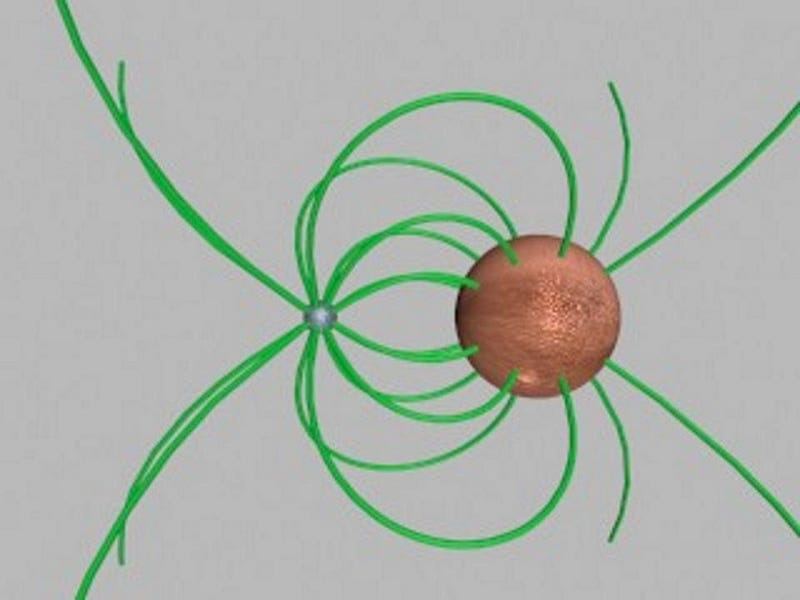
At this point, having not yet crossed the event horizon, you can still get out. If you provide enough acceleration away from the event horizon, you could escape its gravity and have the Universe go back to your safe, far-away-from-the-black-hole, asymptotically flat spacetime. Your gravitational sensors can tell you that there’s a definite downhill gradient towards the center of the blackness and away from the regions where you can still see starlight. The following visualization gets it mostly right, with the exception of the blueshifting of light.
But if you continue your fall towards the event horizon, you’ll eventually see the starlight compress down into a tiny dot behind you, changing color into the blue due to gravitational blueshifting. At the last moment before you cross over into the event horizon, that dot will become red, white, and then blue, as the cosmic microwave and radio backgrounds get shifted into the visible part of the spectrum for your last, final glimpse of the outside Universe, still assuming that nothing else falls in with you.
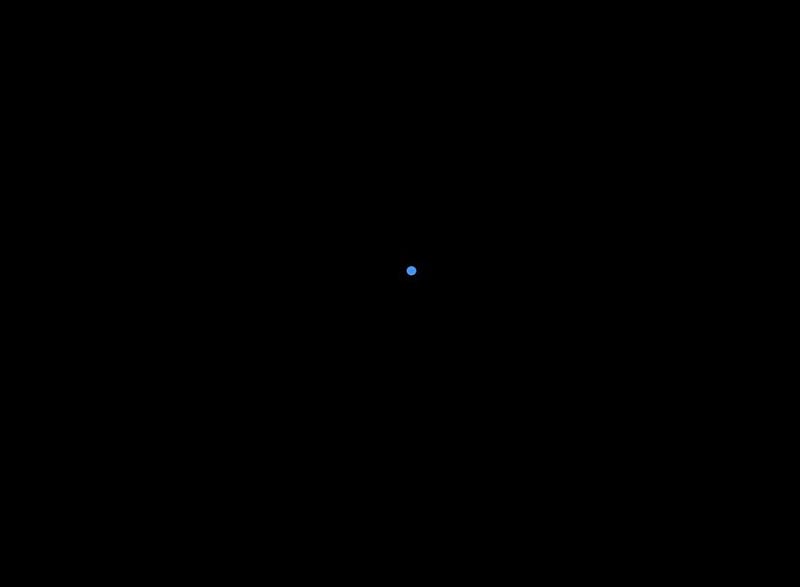
And then… blackness. Nothing. From inside the event horizon, no light from the outside Universe hits your spaceship. You now think about your fabulous spaceship engines, and how you can attempt to get out. You recall which direction the singularity was towards, and sure enough, there’s a gravitational gradient downhill towards that direction.
This treatment assumes that there’s no other matter or light falling into the black hole either ahead of you or behind you. The video below shows what happens if you allow the light from the outside Universe to fall into the black hole all around you, which it does in real life. You’ll cross the event horizon at about the 0:37 mark in the video.
What’s amazing is that even if you weren’t being pelted with infalling light that catches up to you from behind — which accounts for the “half” of the visible Universe that still has something to show you — you could still bring gravitational sensors on board. Once you crossed the event horizon, whether there’s light or not, you’d find something shocking.
Your sensors tell you there’s a gravitational gradient that’s downhill, towards a singularity, in all directions! The gradient even appears to go downhill towards the singularity directly behind you, in the direction that you knew is completely opposite to the singularity!
How is this possible?

It’s possible because you’re inside the event horizon. Any light beam (which you could never catch) you now emitted would end up falling towards the singularity; you are too deep in the black hole’s throat for it to wind up anyplace else!
How long would you have before this happened, as you crossed the horizon at the supermassive, four-million-solar-mass black hole in the galactic center? Believe it or not — despite the fact that we’re talking about an event horizon that might be around a light-hour in diameter in our reference frame — it would only take around 20 seconds to reach the singularity once you crossed the event horizon. Severely curved space sure is a pain!
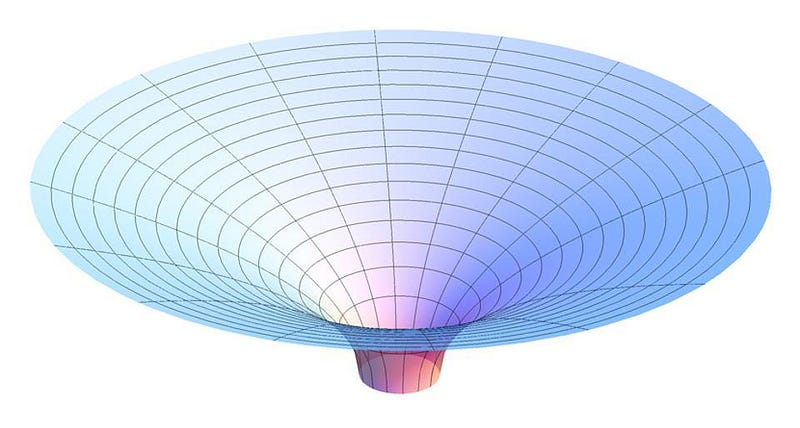
What’s worse is that any acceleration you make, assuming you free-fell in from rest (other assumptions are slightly different), will take you closer to the singularity at an even faster rate! The way to maximize your survival time at this point — and it’s not very long, no matter what — is to not even try to escape! The singularity is there in all directions, and no matter where you look, it’s all downhill from here.
And that’s what you’d see, using your eyes as well as gravitational ones, as you fell into the most gravitationally compact object in all of existence. For once, the Borg from Star Trek had it right. When you fall into a black hole, resistance really is futile.
Ethan Siegel is the author of Beyond the Galaxy and Treknology. You can pre-order his third book, currently in development: the Encyclopaedia Cosmologica.





